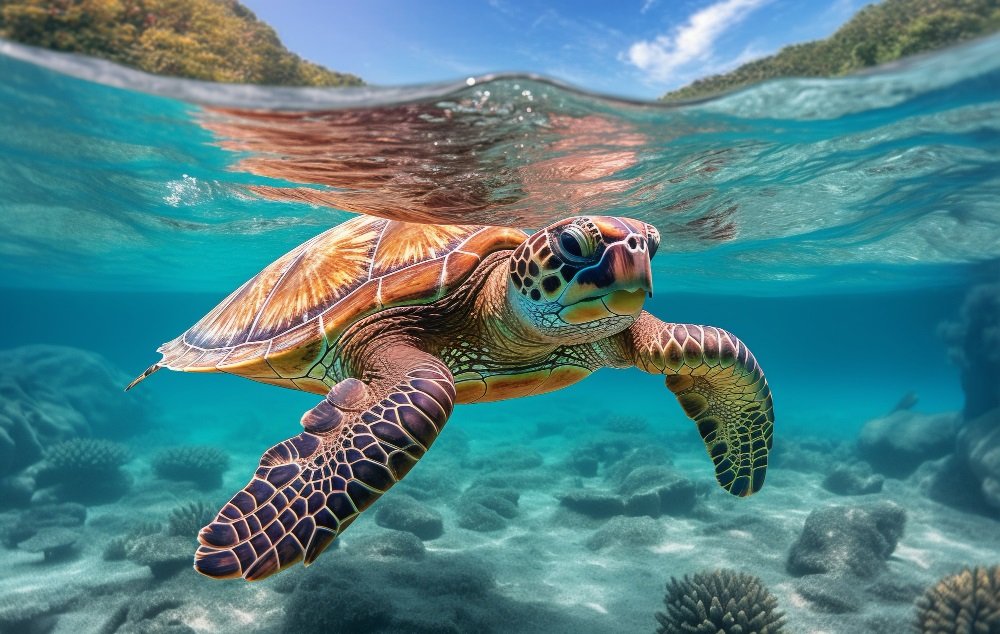Sea turtles are ancient mariners, having graced our oceans for over 100 million years. These magnificent creatures play a vital role in maintaining the health of our marine ecosystems, acting as natural gardeners and contributing to the balance of coastal habitats. However, they face numerous threats that endanger their survival.
Protecting Our Ocean Giants: How We Can Help Save Sea Turtles
From habitat destruction to climate change, sea turtles are under increasing pressure. Understanding the challenges they face and taking action to protect them is crucial for ensuring their future. This guide explores the key threats to sea turtles and outlines practical steps we can all take to contribute to their conservation.
The Plight of Sea Turtles
Sea turtles are listed as endangered or threatened by the IUCN, highlighting the urgency of conservation efforts. Their populations have declined drastically due to a combination of factors, including:
- Habitat Loss and Degradation
- Fishing Gear Entanglement
- Pollution
- Climate Change
- Illegal Trade
How Can We Help Save Sea Turtles
Sea turtles, ancient mariners that have roamed our oceans for over 100 million years, are facing an unprecedented crisis. Habitat loss, pollution, climate change, and human interaction all contribute to their decline. Thankfully, there are many ways we can help protect these magnificent creatures and ensure their survival for generations to come.
Understanding the Threats
To effectively help sea turtles, it’s crucial to understand the threats they face. These threats can be categorized as follows:
Habitat Loss and Degradation
Coastal development, dredging, and pollution destroy nesting beaches and critical foraging grounds. Seagrass beds, crucial for many sea turtle species, are increasingly threatened by coastal runoff and climate change.
Fishing Gear Entanglement and Bycatch
Sea turtles often become entangled in fishing nets and lines, leading to injury, drowning, or starvation. They can also be accidentally caught as bycatch, meaning they are unintentionally caught while targeting other species.
Pollution
Plastic pollution is a major threat to sea turtles. They can ingest plastic debris, mistaking it for food, which can lead to starvation, internal injuries, and death. Chemical pollutants from agricultural runoff and industrial waste also contaminate their habitats and food sources.
Climate Change
Rising sea levels threaten nesting beaches, while warming ocean temperatures can disrupt migration patterns and food availability. Climate change also increases the frequency and intensity of storms, which can damage nesting sites and displace sea turtles. (See Also: What Do Wild Turtles Eat And Drink)
Human Interaction
Sea turtles can be injured or killed by boat strikes, beach disturbances, and the illegal wildlife trade. Light pollution from coastal development can disorient hatchlings, leading them away from the ocean.
Taking Action: How You Can Help
While the threats facing sea turtles are significant, there are many actions we can take to help protect them. Here are some ways to make a difference:
Support Sustainable Seafood Practices
Choose seafood that is caught or farmed in a way that minimizes harm to sea turtles. Look for certifications like the Marine Stewardship Council (MSC) label, which indicates that the seafood was sourced from a sustainable fishery.
Reduce Plastic Consumption
Plastic pollution is a major threat to sea turtles. Reduce your reliance on single-use plastics by bringing your own reusable bags, bottles, and containers. Dispose of plastic waste properly and participate in beach cleanups.
Be a Responsible Tourist
If you are visiting a coastal area, be mindful of sea turtles and their habitats. Avoid disturbing nesting beaches, and never touch or harass sea turtles. Choose tour operators who prioritize responsible wildlife viewing practices.
Support Sea Turtle Conservation Organizations
Many organizations are dedicated to protecting sea turtles and their habitats. Donate to these organizations, volunteer your time, or spread awareness about their work.
Advocate for Policy Change
Contact your elected officials to urge them to support policies that protect sea turtles and their environment. This includes supporting legislation that reduces plastic pollution, protects critical habitats, and regulates fishing practices. (See Also: Turtles What They Eat)
Educate Others
Share your knowledge about sea turtles and the threats they face with your friends, family, and community. Encourage others to take action to help protect these amazing creatures.
Making a Difference: Success Stories and Ongoing Efforts
Despite the challenges, there have been some encouraging success stories in sea turtle conservation. Through dedicated efforts, several species have seen population increases. Here are a few examples:
Loggerhead Sea Turtles in Florida
Thanks to conservation efforts, loggerhead sea turtle populations in Florida have rebounded significantly. These efforts include beach nesting protection, nest relocation, and public education campaigns.
Hawksbill Sea Turtles in the Caribbean
The hawksbill sea turtle, once critically endangered, has seen a population increase in some Caribbean countries due to strict regulations on the trade of their shells and habitat protection.
Green Sea Turtles in Australia
Green sea turtles in Australia have benefited from the establishment of marine protected areas, which provide safe havens for nesting and foraging.
These success stories demonstrate the positive impact that conservation efforts can have on sea turtle populations. However, continued vigilance and action are essential to ensure their long-term survival.
Conclusion
Sea turtles face numerous threats, but through collective action, we can help protect these magnificent creatures. By supporting sustainable practices, reducing our impact on the environment, and advocating for policy change, we can make a difference in the fight to save sea turtles. Their survival depends on our commitment to conservation and our willingness to act now.
Frequently Asked Questions: How Can We Help Save Sea Turtles?
What are the biggest threats to sea turtles?
Sea turtles face numerous threats, including habitat loss due to coastal development and pollution, entanglement in fishing gear, ingestion of plastic debris, climate change, and the illegal wildlife trade. (See Also: What Turtles Are In Florida)
How can I reduce my impact on sea turtles?
You can help by reducing your plastic consumption, properly disposing of waste, supporting sustainable seafood choices, and being mindful of your actions on beaches. Avoid using single-use plastics, participate in beach cleanups, and choose seafood from fisheries that use turtle-friendly practices.
What can I do to protect sea turtle nesting sites?
Respect designated nesting areas, avoid disturbing nests or hatchlings, and use red light flashlights at night to minimize disturbance. Report any injured or distressed turtles to local authorities.
How can I support organizations working to conserve sea turtles?
You can donate to reputable sea turtle conservation organizations, volunteer your time, spread awareness about sea turtle issues, and advocate for policies that protect these animals and their habitats.
Are there any specific actions I can take on the beach to help sea turtles?
Yes! Fill in any holes you dig, remove any trash or debris, and avoid using bright lights near the water’s edge. If you encounter a hatchling, gently guide it towards the ocean and avoid picking it up.


